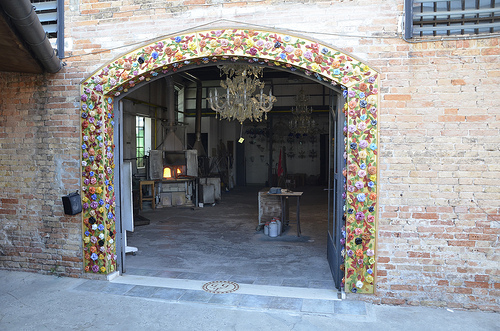The roots of glass-making in Venice date back to Roman occupation around the 5th Century; sheets of molded glass primarily used for windows in public bathhouses. Over the centuries, artisans combined techniques developed by the Romans with knowledge gained from Oriental traders, transforming Venice into one of the world’s leading cities for glass-making by the 9th Century.
By the mid 13th Century, glass-making had become the primary industry of Venice, and a formal Glassmakers Guild was set up to regulate production in the city. It’s primary purpose was to ensure that trade secrets weren’t leaked to ‘spies’ sent over from Asia and other parts of Europe, as they believed this would compromise profitability. By 1271, the Guild had established a series of laws prohibiting all imports of glass to Venice from other nations, and the employment of non natives of the city. A subsequent law prohibited Venetian glass-makers from leaving the city without permission from the Glassmakers Guild, and prevented those who had left from returning.
Before the end of the 13th Century, every single furnace in Venice had been moved from the city to the island of Murano due to the fire-risk posed to important city buildings. This was the official reason cited for the move, however, many believed it was motivated by the Guild’s desire to have even greater control over the glass-making industry. Despite this, artisans who worked on the island enjoyed myriad of social privileges. They were invited to masquerade balls; their daughters were invited to socialize with young, attractive men of nobility, and some were even paid higher rates for their wares in return for guaranteeing the continuity of their businesses by training their offspring.
The development of numerous trade links in the 14th Century saw Venice become even more powerful. Glass-makers began producing glass beads in quantitative supply to fuel trade developments in Asia, North America and Africa. To tribes in America and Africa, these tiny trinkets became more valuable than gold, and they graciously accepted them in exchange for animal pelts, slaves and palm oil. Over the next 400 years beads became more elaborate and detailed in design as artisans developed new techniques, cementing Venice’s position as the world capital of glass production.

